After a couple of days resting in Saint-Louis, under no rush of any visa since Senegal, like Morocco, allows me to stay for 3 months, I can head to Dakar. The Senegalese capital is only 270 km from Saint-Louis by the main road, but I decide to take anti-shortcuts to visit the northern part of the country in a deeper way.
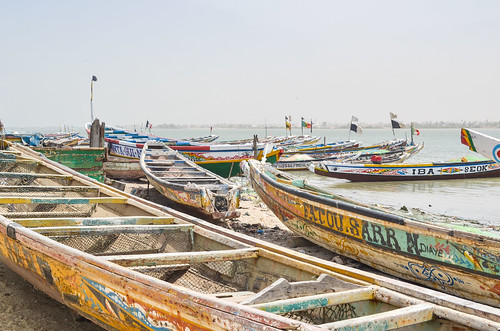
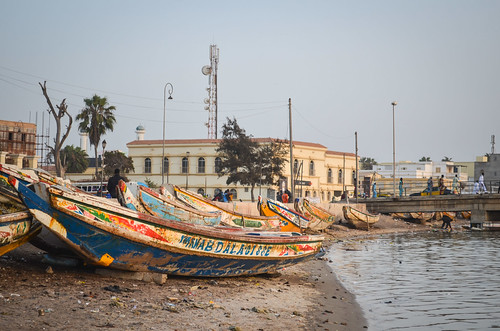
Saint-Louis is a nice town built on islands. As a former capital of Senegal, and even Mauritania, during the French occupation, it has many colonial buildings. The waters between the main island, Sor on the mainland, and the Langue de Barbarie, are quite dirty. The Langue de Barbarie hosts many big hotels, but they are all empty. Tourism is in crisis here, probably as a consequence of the lesser traffic from Mauritania and the recent severe restrictions on the importation of cars, which used to provide a lot of easy money to people driving a worthless old car from Europe down to Senegal to sell it here for real good money.


The city is colorful and has a happy vibe (compared to the previous countries), but the prices of most of things are much higher than in Mauritania (which already sells Moroccan things with a price increase). Many people, kids and adults, greet me with “give me your bicycle“, “give me your bags“, “give me money“, “give me the Senegal flag“, “give me the tire“, in a serious but relaxed manner. If I carry bread, I will hear “give me the bread“. It seems I am asked whatever people see on me, whether they already have it or not, whether they need it or not. Like people asking for my 26″ spare tire for their 20” wheels. The most annoying is the Senegal flag, that I had poorly prepared from nothing but strips of green, yellow and red fabric to be thrown away, to put on the rear of my bicycle. Anyone can make such a thing, yet people want me to give it. I am like Santa Claus.
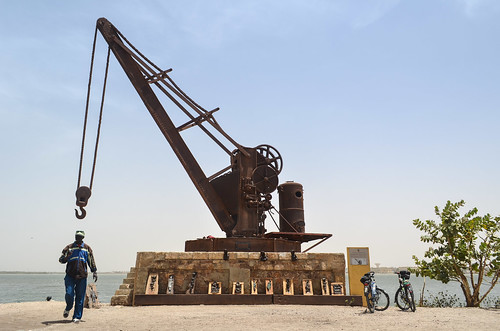

The only option to avoid the main road to Dakar is to head to the north, backwards considering I arrived from Mauritania, and take the piste going through the Djoudj bird sanctuary. It is neither mentioned on any maps I’ve seen, nor on the internet, but I was told that pistes exist in the area, so I am going with an optimistic exploring mood.
While leaving Saint-Louis, I look for a SIM card to get mobile internet on my phone. Orange (who manages the Sonatel historical network) does it well but for a lot of money, 3 € for a day or 40 € for a month, with capped data usage. I went to the 2 official shops in town to get information, but none of them knew what they are selling and I was redirected to a phone number and to the internet website. The very poor service at Orange is comparable at Expresso, the other mobile internet provider with a good country coverage and much lower prices. Expresso ran out of SIM cards and they’re not available in Saint-Louis, so I have to find them somewhere else or get it from one of the street re-sellers, who know the situation and play on the prices.
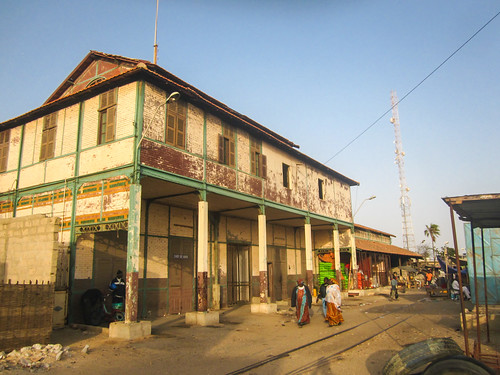
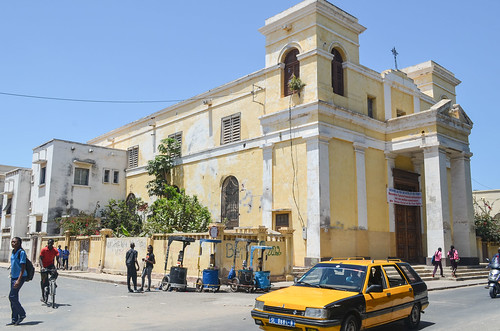
The road outside Saint-Louis is the same going to Diama. It goes well for 20 km until I have to turn right to make 40 km of piste until the Djoudj bird sanctuary entrance.
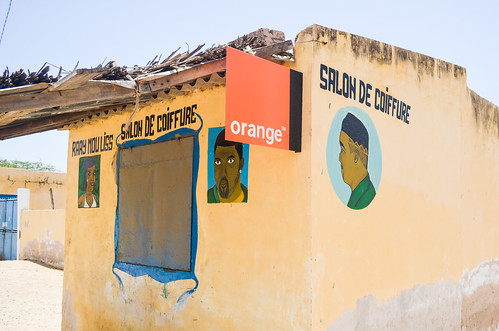

The piste is of good quality and I reach rather quickly the gates of the national park. There, I can camp next to the house of the doctor. In the evening, we listen to RFI (Radio France Internationale) to a program where people from all over French-speaking Africa can call and comment the the news. The topic of the day is the Cahuzac scandal and the moralization of political life in France. Many parallels are drawn between the political figures and problems in Paris and in Ouagadougou and Kinshasa … ending by a caller from Senegal saying that the country is ahead of France, since political leaders in Dakar must declare their assets according to a law passed a long time ago. The discussion is interesting, but a few days later, Karim Wade, the son of the former president Abdoulaye Wade and current minister of many things, is sent to jail for having been discovered with over 1 billion euros of hidden assets (7% of the country’s GDP).
For the next day, I have bought a ticket to go on a short boat trip inside the park to see the birds from closer. I am not a fan of bird watching, and I only have a wide angle lens, but since there’s almost nothing special to see in northern Senegal, I’ll have a look.
There is an embankment going through the marsh where the birds are nesting, until a small pier. On the way I meet for a couple of seconds, face-to-face, with a warthog, observing each other like if to know which of us will leave the track to the other. But as in Mauritania, the warthogs are peaceful and he runs away as I get closer to him. The location of the Djoudj park is right across the river Senegal from where I way a couple of days ago, in the Diawling national park of Mauritania.
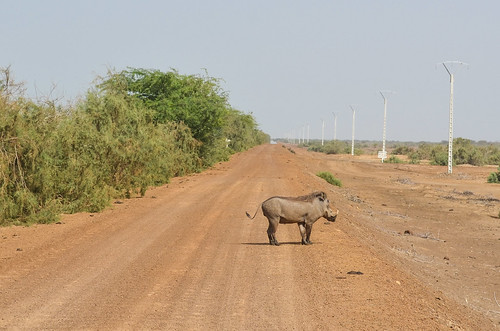
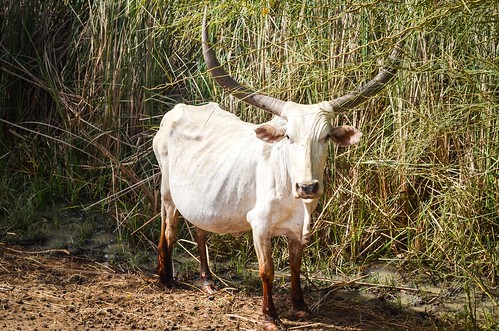

The waters have already started to withdraw and the boat trip will be shorter than planned, as the boats can’t navigate until the pelican’s nesting place. It’s April and already the end of the pleasant season. During the overwintering, birds are going away and tourism will run in slow motion until December.
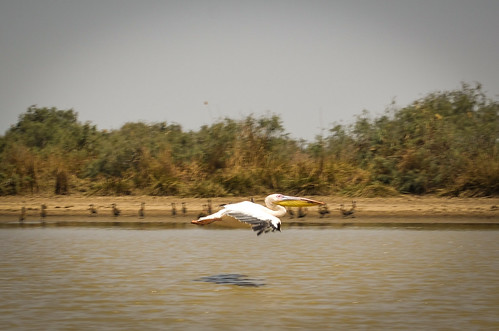
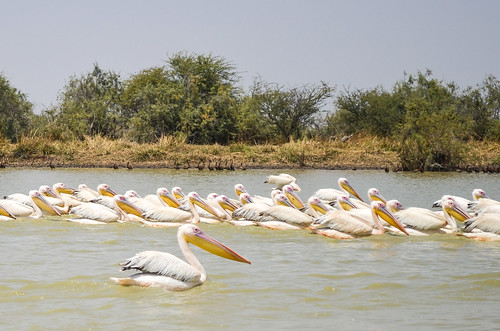
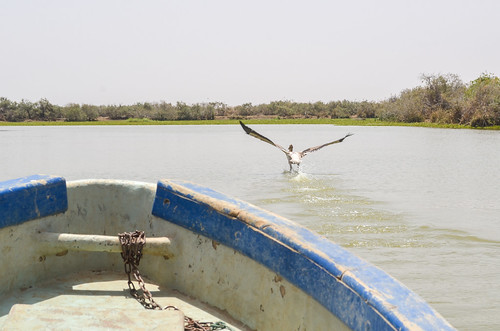
I didn’t expect how impressive would it be to see the pelicans from very close. Those huge funny looking birds need to run dozens of meters on the water before they can take off. Then they fly slowly and majestically. It should be the other way around, but it reminds me of an article about the secret Ekranoplan.
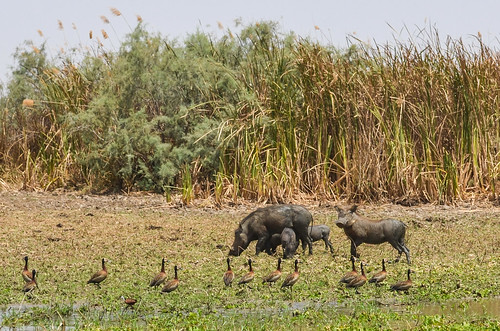




The park is home not only to pelicans, but also serpent birds, fish eagles, spoonbills, ducks, herons … we even find, sadly, fishing nets of poachers.
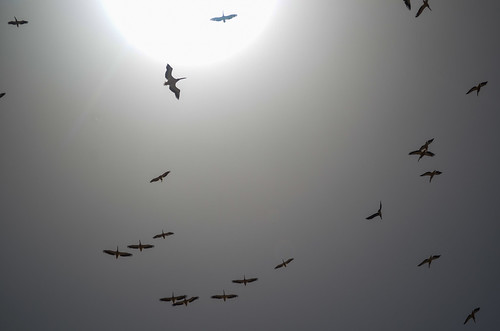
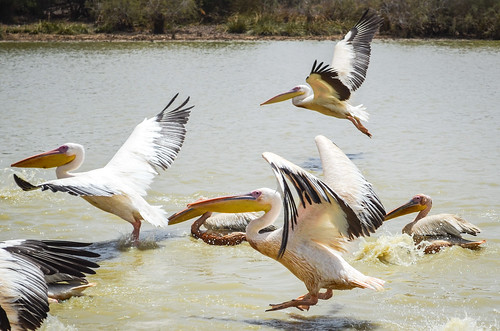
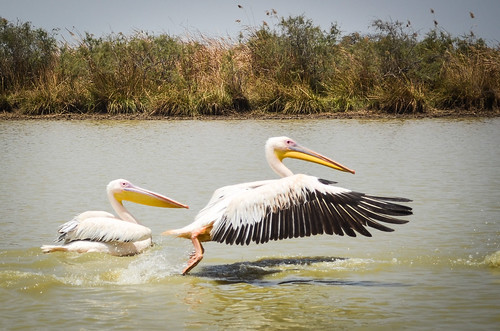
I spend then the whole afternoon on the same piste following the river Senegal. It’s green on my left and desertic on my right. But quite regularly there are pumps, either electric for the main ones but often petrol pumps, pouring the water from the river into the farming area. At one lodge to refill my water bottles, I believe to see a crocodile, but it is in fact a big varan about 2 meter long. Fortunately again, those impressive animals fear humans. I am told some people prepare it and serve it as a dish … I’ll have to find it.

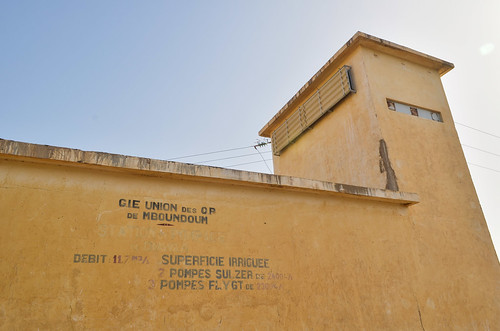
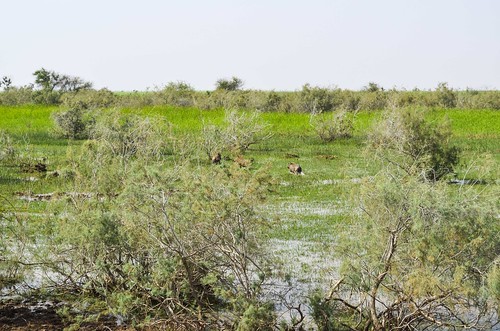
This area is used for rice fields. I am about to reach Rosso, the other border Mauritania/Senegal with Diama, but decide to stop 4 km before reaching the paved roads, in Thiagar. When asking for a spot to put up my tent, I am hosted by one manager of the big rice company, in his house so filled with family members it looks like a party. They warn me about mosquitoes but I am prepared with my repellents and mosquito net. However, as soon as the sun disappears, the whole village and houses are invaded by mosquitoes and it’s a nightmare. I accept a bucket of water for showering, which turns out to be a bad idea, as I am continuously bitten in the darkness through the water. That triggers my start of the preventive pill treatment against malaria. Even if people say it’s not the season or it’s not so risky in this area, it will help not getting paranoid, as being out for most nights, I won’t be able to avoid every mosquito bites. It would be a very nice evening if mosquitoes were not constantly biting me through my clothes, and I find relief once on the roof top under the net.
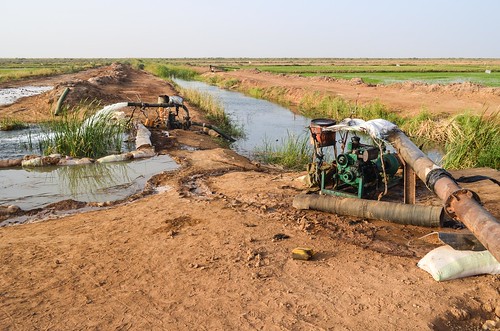







Hi there, finally you saw some animal other than usual from desert. Ganbatte!
hai hai, gambaru yo!
Ca a l’air super beau le Sénégal!